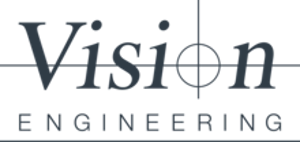As all aspects of electronics get smaller and smaller, visual inspection is more critical to assist with any components that need to be assembled by operators or any electronics that need final inspection before shipping. Magnifiers, stereo microscopes, and tri-nocular microscopes (which have an optical path for digital output and capture and fully digital camera systems) are all in great use due to increasing miniaturization of electronic assemblies.
Vision inspection can take many forms and what is optimal usually depends on the operator's preference for the specific task. Tasks that require manual assembly generally need a high working distance in order to be able to manipulate the parts and substrate. Tasks that are only for inspection can accommodate higher magnification and a lower working distance. Working distance, field of view and magnification are all factors that need to be optimized. Field of view determines how much of an object can be seen, and it is inversely proportional to magnification. The higher the magnification, the smaller the field of view. General electronics assembly and inspection is typically done at 4X magnification. If a higher level of inspection is required, the quality manager will typically use 10X. For semiconductor and silicon die or wafer inspection, typical inspection could be at 50 - 100 X, as the features are much smaller and require high magnification. Once the volume of parts to inspect increases beyond what operators can inspect, there are many new options for automated optical inspection.

